Topic: The Solar System
The Solar System

Which condition would produce an orbit with a greater eccentricity?
(1) a decrease in the distance between the Sun and F2
(2) an increase in the distance between the Sun and F2
(3) a constant decrease in the orbital velocity of the planet
(4) a constant increase in the orbital velocity of the planet
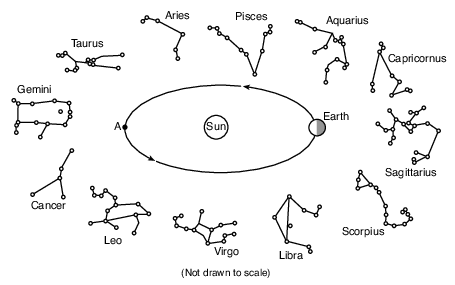
Approximately how many days (d) does it take for Earth to orbit from its present position to point A?
(1) 27 d
(2) 91 d
(3) 183 d
(4) 365 d
Which planet’s day (period of rotation) is longer than its year (period of revolution)?
(1) Mercury
(2) Venus
(3) Jupiter
(4) Saturn
The diagram below shows the relative positions of Earth and Mars in their orbits on a particular date during the winter of 2007.

Which diagram correctly shows the locations of Earth and Mars on the same date during the winter of 2008?

(1) 1
(2) 2
(3) 3
(4) 4
Which planet has completed less than one orbit of the Sun in the last 100 years?
(1) Mars
(2) Mercury
(3) Neptune
(4) Uranus

Since Earth has an elliptical orbit, the
(1) distance between the Sun and Earth varies
(2) distance between the Sun and the other focus varies
(3) length of Earth’s major axis varies
(4) length of Earth’s period of revolution varies
Earth’s rate of revolution is approximately
(1) 1° per day
(2) 15° per day
(3) 23.5° per day
(4) 360° per day
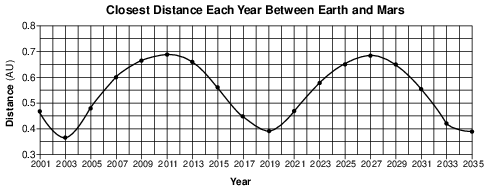
How many million kilometers is one astronomical unit?
(1) 108.2 million km
(2) 149.6 million km
(3) 227.9 million km
(4) 377.5 million km
Which characteristic is directly related to a planet’s average distance from the Sun?
(1) period of revolution
(2) period of rotation
(3) eccentricity of orbit
(4) equatorial diameter
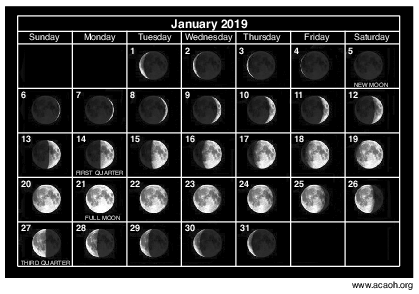
A New Moon occurred on January 5, 2019. Determine the date of the New Moon that occurred in February 2019. [1]
February____________ , 2019
Allow 1 credit for February 3, 2019 or February 4, 2019.

How many days does it take the Moon to go from one full-Moon phase to the next full-Moon phase when viewed from Earth? [1]
d
Allow 1 credit for any value from 29 d to 30 d.
Using the terms rotation and revolution, explain why the same side of the Moon always faces Earth. [1]
Allow 1 credit. Acceptable responses include, but are not limited to:
• — The Moon’s period of rotation equals its period of revolution.
• — The Moon rotates and revolves once in 27.3 days.
• — The Moon rotates and revolves at the same rate.
Huygens Probe Lands on Titan
The Huygens probe was carried to Saturn by the Cassini spacecraft and parachuted to the surface of Saturn’s giant moon, Titan. The Huygens probe’s landing site was littered with smooth, rounded, rocklike objects. Photographs taken of Titan’s surface show drainage channels leading to an apparent shoreline. The question is, what are they draining? One of the photographs seems to show ground fog consisting not of water, but perhaps of ethane or methane.

Approximately how many times farther is Titan from Saturn than Earth’s Moon is from Earth? [1]
times farther
Allow 1 credit for any value from 3.0 to 3.2 times farther.
On the diagram in the image provided, place an X on each planet’s orbital path to show the positions of Earth, Venus, and Mercury on the 55th day of each planet’s orbit. [1]

Allow 1 credit if the centers of all three Xs are within the circles shown below.
• Note: Do not allow credit if more than one X is placed on any orbit.
• Allow credit even if a symbol other than an X is used.. It is recommended that an overlay of the same scale as the student answer booklet be used to ensure reliability in rating.
• 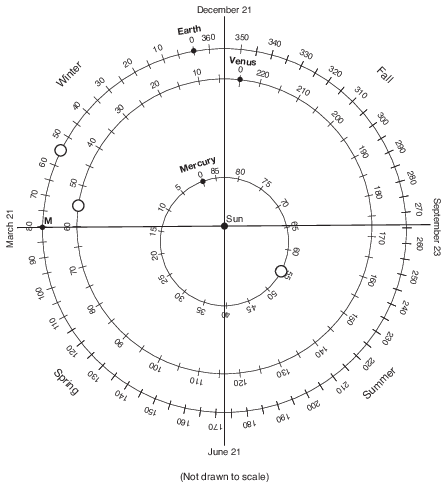

On the grid in the image provided, the Earth–Moon distance data from December 2 to December 12 have already been plotted. Complete the line graph by plotting the Earth–Moon distances from December 14 to December 30. Continue the line from December 12 through all nine of your plotted points. [1]
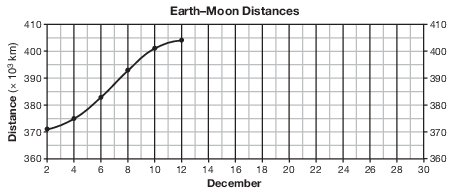
Allow 1 credit if the centers of all nine of the student’s plots are within or touch the circles shown and all 15 plots are correctly connected with a line that passes within or touches each circle.
• Note: Allow credit if the line misses a plot but is still within or touches the circle.
• It is recommended that an overlay of the same scale as the student answer booklet be used to ensure reliability in rating.
• 
